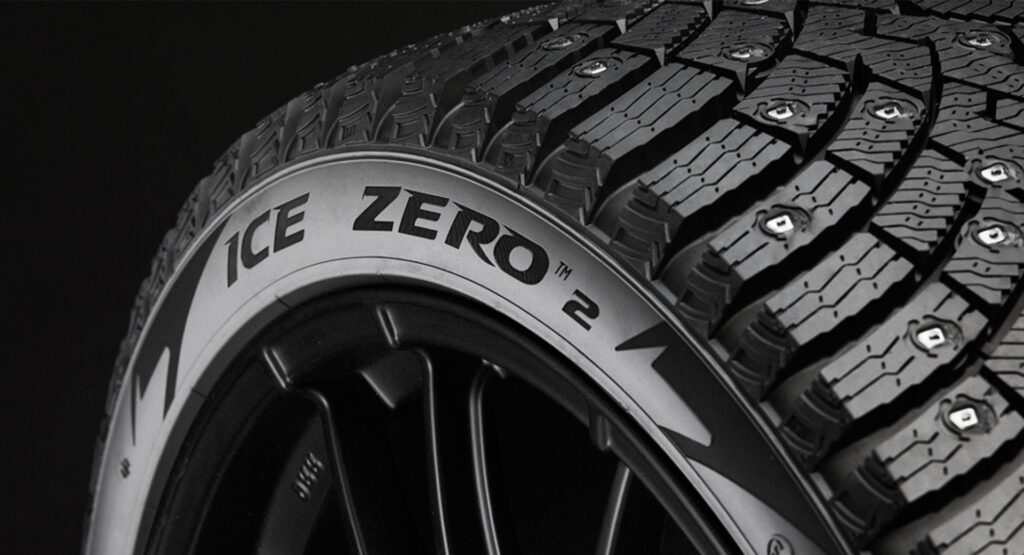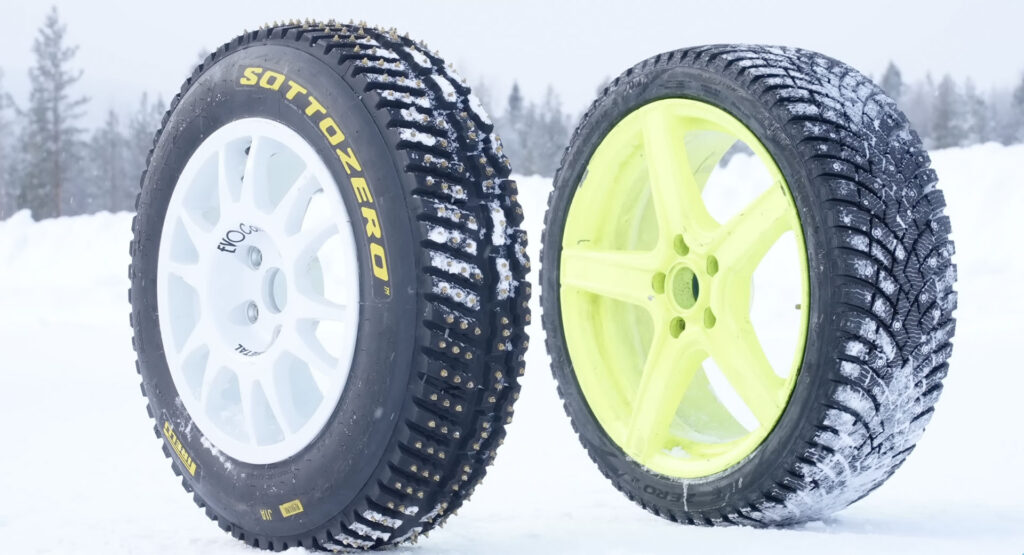If you’ve been anywhere near social media this past week, you’ve likely seen how even the slowest maneuvers in treacherous conditions have the potential to go horribly wrong, and we’re willing to bet that a fair few of these incidents involved cars that didn’t have winter tires installed.
After proving that swapping out your summer or all-season tires for a set of winters does indeed make a significant difference to everyday driveability on snow, Jonathan Benson from Tyre Reviews is back to compare Pirelli’s Ice Zero 2 with the Pirelli SottoZero used on snowy stages of the WRC.
While the Ice Zero 2 is one of the highest-rated studded road tires, straight off the bat, it’s had to make compromises in the name of practicality. The tires themselves have to comply with the road car fitment, which means they’re typically as wide as your conventional tire. The Ice Zero 2 also has to be rated for use on public roads to ensure that driving conventional cars with these 1mm studs don’t do too much damage to the bitumen.
The WRC-spec SottoZero tires, on the other hand, don’t need to make any such regulatory accommodations. In addition to having a higher density of studs per centimeter, the rally car tires’ metal studs are 6mm longer — or in other words, seven times as long as those allowed on the road car winter tires.
Read: Which Is More Effective On Snow And Ice, All-Wheel Drive Or Winter Tires?

The WRC snow and ice tires are thinner too. While this may seem counterintuitive at first, it means there’s more pressure on the smaller surface area, allowing the SottoZeros to dig through the powdery and icy stuff to the surface below.
The results are remarkable, as Benson finds out on a purpose-built winter test track. According to him, the WRC tires make a huge difference in the traction and braking but crucially enable the car to respond even better laterally thanks to vastly-improved grip levels.
The proof is in the timings, with the racing tires being 8.2 seconds faster than the road tires around the snow circuit. Things get even more impressive on ice, with the longer studs and thinner footprint of the rally tires allowing Benson to better his winter rubber time by an astounding 17.9 seconds.
Sadly, many of us will never be able to get the opportunity to experience a proper WRC snow tire on a Lapland-like rally course. But for those of you battling the elements on the roads, you’ll still be afforded some extra grip with a set of studded black circles.




